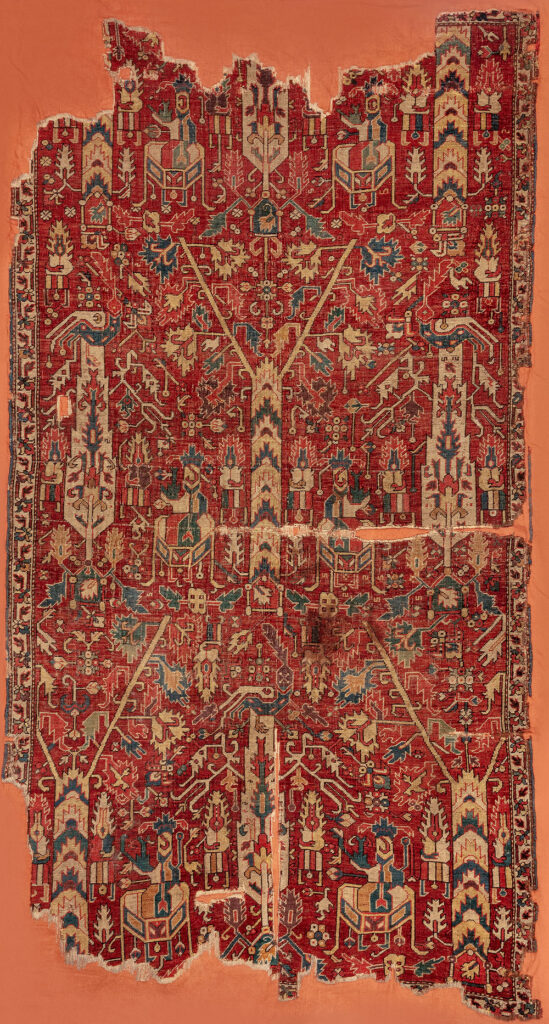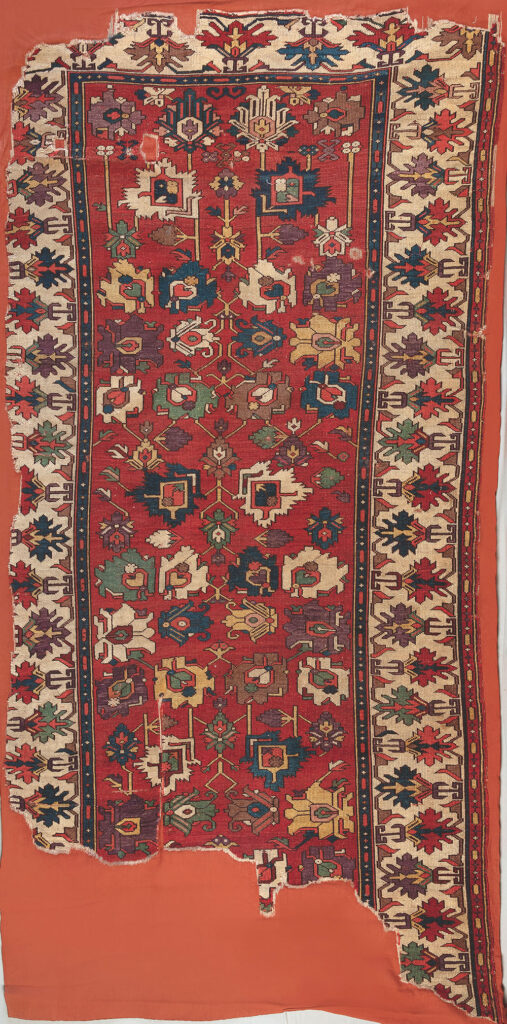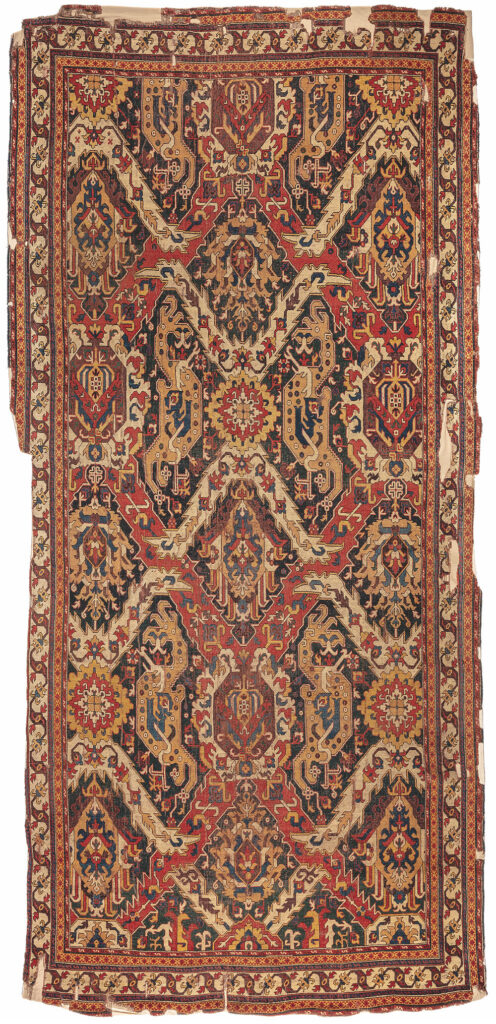Exhibition of Newly Conserved Carpets in Istanbul
In HALI 204, Alberto Boralevi warmly welcomed an important exhibition of newly conserved carpets which opened at the Istanbul Museum of Turkish and Islamic Art (TIEM) on 13 March. An abridged version of Alberto Boralevi’s article follows:
This exhibition is a product of the cooperation between the Azerbaijan National Carpet Museum (ANCM) and the TIEM, and in particular the two directors and curators of the exhibition, Shirin Melikova and Seracettin Şahin. The Baku Carpet Museum was founded more than fifty years ago. In recent times, after the opening of its new dedicated building and the arrival of a young and determined director, Shirin Melikova, it has developed a new vision.

(1) Carpet fragment, Azerbaijan, 17th/18th century. Warp: wool, Z2S; bottom weft: wool, light brown, Z2S; top weft: wool, light brown, Z2S; pile: wool, 2Z, h. 2-3 mm; symmetric knot, density: 34 x 36 sq.dm; 1.35 x 2.60 m (4′ 5″ x 8′ 6″). TIEM, Istanbul, inv. no. 887-75
It is well known that not many early Azerbaijani carpets have survived and that almost all are nowadays out of the Azerbaijani territory, mainly in western museums and collections. Possibly the largest number and some of the most interesting examples are today preserved in Turkey. We can also assume that also most of those in western museums were originally purchased in Turkey. In Istanbul the TIEM collection is particularly important for the great number of specimens acquired since the beginning of the 20th century, having been rescued from mosques all over the country, but particularly from various centres in eastern Anatolia. These carpets are noteworthy for their age and for the large dimensions, although their condition is sometimes precarious. Because of their unusual size and very strong weaving quality, it is arguable that they were originally acquired to furnish mosques. They were probably easier to find than the expensive carpets woven in Ottoman court workshops in western Anatolia, or those intended for export to Europe, like various types of the Ushak group.

(2) ‘Afshan’ carpet, Azerbaijan, 18th century or earlier. Warp: wool, Z2S; bottom weft: wool, red, Z2S; top weft: wool, red, Z2S; pile: wool, 2Z, h. 2-3 mm ivory; symmetric knot, density: 24 x 40 sq.dm, 1.50 x 3.08 m (4′ 11″ x 10 1″). TIEM, Istanbul, inv. no. 860

(3) ‘Dragon’ carpet, Azerbaijan, 17th century. Warp: wool, Z2S; bottom weft: wool, light red, 2Z; top weft: wool, light red, 2Z; pile: wool, 2Z, h. 2-3 mm; symmetric knot, density: 32 x 32 sq.dm; 2.20 x 4.70 m (7′ 3″ x 15′ 5″). TIEM, Istanbul, inv. no. 904

(5) ‘Dragon’ carpet, Azerbaijan, 18th century. Warp: wool, Z2S; bottom weft: wool, red, 2Z; top weft: wool, red, 2Z; pile: wool, 2Z, h. 2-3 mm; symmetric knot, density: 34 x 34 sq.dm; 2.01 x 3.84 m (6′ 7″ x 12′ 7″). TIEM, Istanbul, inv. no. 97
Register for ICW here to view more pieces from the show, 21-23 October.

























Comments [0] Sign in to comment